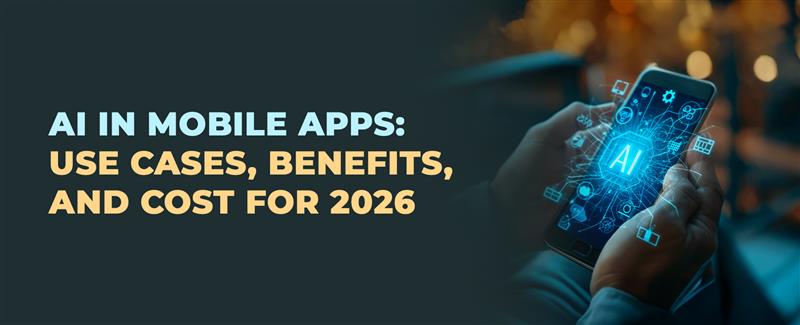HOW TO DEVELOP IOS APPS ON WINDOWS
1 Jan 21 

Have you ever thought of developing an iOS mobile app on windows?
The answer will be most probably a big NO, however, the times have changed and let’s find out how to develop an iOS app on windows.
The main issue that holds you from iOS app development in windows was the Xcode, the Integrated Development Environment (IDE) we use to design and develop an iOS app.
Xcode includes a swift compiler, interface builder and other required tools to upload your app to the app store.
Now Xcode contains everything you need to build an iOS application.
The only issue is that it is only compatible with Mac OS X (now called Mac OS).
Another issue is that you can’t buy any PC with Mac OS on it because unlike Windows, Apple doesn’t let you license its OS with other manufacturers.
When you purchase an OS X, you can license to only run this OS on Apple hardware.
This limits you to develop apps that run only on a Mac.
Top 8 Ways to Develop an iOS App on Windows PC
1. Use Virtualbox and Install Mac OS on Your Windows PC
The quickest way to develop iOS apps on windows is with the help of a virtual machine.
A virtual machine will create an environment where any operating system can run in like it’s running in the same hardware itself.
This functionality is called virtualization as it allows you to run Windows on Linux and even Windows on OS X.
To run Mac OS on a virtual machine, you need two things:
• A copy of OS X as a virtual image file or an installer.
• A virtual machine tool like VirtualBox or VMWare.
You can acquire a duplicate of OS X by downloading it from the App Store.
You can likewise find installers from different sources on the internet.
Remember that utilizing Mac OS on non-Apple hardware is against Apple’s End User License Agreement (EULA).
2. Rent a Mac in the Cloud
A considerably simpler approach to get your hands on OS X is to lease a Mac in the Cloud, although it will be much more expensive.
Services like Mac-in-Cloud and Mac-Stadium offer affordable rent-a-Mac products.
You can connect with those cloud-based Macs by means of a Remote Desktop Connection (RDP).
Windows provides a stock Remote Desktop you can utilize, thus do most Linux OS.
Once you’re signed in, you can install Xcode and your iOS app development services.
3. Build Your Own “Hackintosh”
The most evident choice iOS app development services on a Windows PC is maybe to actually install OS X on a Windows PC.
Apple enthusiasts have always enjoyed the integrated user experience, design, and interconnectivity the tech giant has offered.
A Hackintosh is a PC that runs Mac OS. It is same as installing an OS X in a Virtual machine, likewise, you can install OS X as a bootable OS to your PC.
4. Create iOS Apps on Windows with Cross-Platform Tools
Cross-platform tools are amazing: you code your application once and export it to iOS and Android.
That could cut your application development time and cost into the half.
A few cross-platform tools enable you to create iOS applications on a Windows PC or allow you to compile the application if there’s a Mac within your network.
A regularly heard argument against cross-platform app development tools is that they offer restricted access to and support for smartphone hardware, and are less “smart” than their counterparts.
Remember that any cross-platform tool will expect you to compose platform-specific code at a certain point, particularly if you need to code custom features.
5. Code with a Swift Sandbox
Swift is an open-source language, which implies that you can effectively run it on any hardware.
Swift is an open-source language, which implies that you can effectively run it on any hardware.
Accordingly, you can likewise run it in your browser too – if the language is ported to Chrome, Safari or Firefox.
You can learn Swift and code with it without needing a Mac or XCode, using Swift Sandbox.
Once you run a code in Swift Sandbox, it will send the code to a webserver. The webserver will compile the code and return a result.
Accordingly, you can likewise run it in your browser too – if the language is ported to Chrome, Safari or Firefox.
6. Use Unity3D
A powerful IDE, Unity, is essentially known as a game development engine that can be used on Android, iOS, Windows, and many other platforms.
But its rapid development and powerful features also make it a good choice for building non-gaming apps.
Unity’s “Cloud Build” feature supports iOS development on Windows in simple steps.
By registering as an Apple developer and joining the unity cloud build, it is easy to set up, create, and build iOS projects.
With a free to use editor for development and distribution, it is possible to completely build an ios app in Windows.
You only need a Mac to compile the project!
7. With the Hybrid Framework, Xamarin
A cheaper option than Cloud Mac, hybrid frameworks give a cost-effective solution or iOS development on Windows.
Xamarin is a trusted choice by most developers, who claim that it provides real native output.
It uses C# for coding. It is a feature-rich platform that allows you to build and compile iOS apps and deploy them to iOS devices from Windows.
The only thing you cannot do from Windows and require a Mac is the submission to the app store.
8. In React Native Environment
React Native is a cross platform tool based on Javascript that is widely being used for iOS development on Windows.
It has several exceptional features and an easy learning curve, making it a popular tool among developers.
Using the android emulator and by setting up Mac OS deployment machines, developing an iOS application in Windows is possible.
To see the output, you can use the Expo simulator, which is available on both Android and iOS.
Conclusion
If you wanted to start building on iOS and unavailability of a Mac OS was what was stopping you, then these alternatives are exactly what you need.
Although these might be a little complicated that directly building on Mac, they are tried and tested alternatives by developers worldwide.
In the end, iOS application development is all about familiarizing yourself with Xcode.
Once you’re comfortable there, you can develop your app with the tools mentioned above, which will help you get started on the right path.
- Agentic AI1
- Android Development3
- Artificial Intelligence35
- Classified App3
- Custom App Development5
- Digital Transformation12
- Doctor Appointment Booking App14
- Dropshipping1
- Ecommerce Apps40
- Education Apps2
- Fintech-Apps37
- Fitness App4
- Flutter4
- Flutter Apps20
- Food Delivery App5
- Grocery App Development1
- Grocery Apps3
- Health Care10
- IoT2
- Loyalty Programs9
- Matrimony Apps1
- Microsoft1
- Mobile App Maintenance2
- Mobile Apps130
- Product Engineering6
- Progressive Web Apps1
- React Native Apps2
- Saas Application2
- Shopify9
- Software Development3
- Taxi Booking Apps7
- Truck Booking App5
- UI UX Design8
- Uncategorized6
- Web App Development1


















Comments